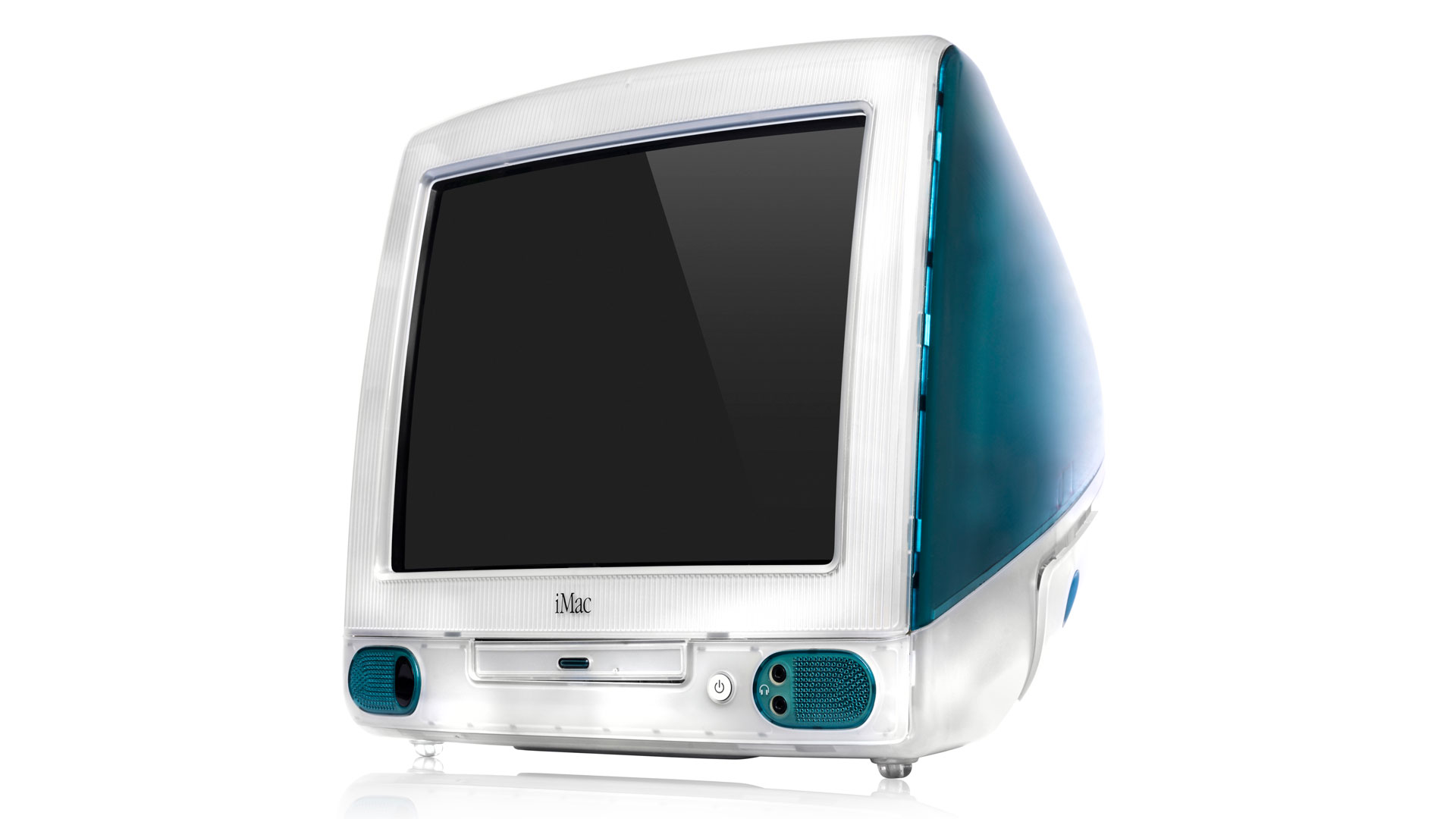
I never liked the original iMac. I know, heresy on its 25th anniversary, but it always struck me as an oversized, candy-colored box, and today it's a long distance away from the best iMacs of the modern era.
When Steve Jobs, then interim CEO at Apple, introduced it on May 6, 1998, I didn’t pay much attention. I was an editor at Windows Magazine, after all, and Apple had shrunk to barely a blip on our radar.
Within a year, though, I was at a new job where my coworkers, a team of creative Apple fans, were cheerfully replacing PowerMacs with a collection of multi-colored iMac computers.
...the iMac, which combines the excitement of the internet with the simplicity of a Macintosh.
Steve Jobs
At 17.6 inches by 15.2 inches by 15.8 inches tall and weighing over 38 lbs, it was marginally considered portable thanks to the integrated handle, a lineage trait it shared with the original Macintosh. I remember lifting a couple as we moved them around the office. Coworkers receiving them were excited. I still did not get it.
It was a decent system, with an enviable number of modern USB ports and integrated connectivity, and inside was the essence of the original Mac, which turned 15 years old shortly after. It didn’t have a floppy drive, though, and some critics considered this omission a tick too far ahead of its time.
The 'i' of it all
What’s often lost in the story of the iMac is how its name would, without the explosion of the modern Internet (or World Wide Web) just a few years earlier, probably have just been “Mac.”
In July 1998, two months after the iMac's unveiling (it finally shipped in August), Jobs explained at MacWorld: “… the iMac, which combines the excitement of the internet with the simplicity of a Macintosh.“ The “i “ was for “Internet.” This is according to the new book about the late Apple founder, Make Something Wonderful.
Just think about that for a minute. Without the iMac, there’d be no iPod and, of course, no iPhone. Naturally, by the time the iPhone came along in 2007, no one thought the “i” was about accessing the World Wide Web.

In some ways this iconic product was doomed from the start. It had a 15-inch cathode ray tube screen, an almost shocking decision considering the rapid proliferation of external LCD displays (most were paired with a tower system).
Still, there weren’t any all-in-one systems of note that included a flat panel, so I guess the choice is forgivable. Within three years, Apple discarded not just the tube display, but the entire iMac design.
The iconic all-white 2001 iMac G4 model featured a rounded base with a stainless steel armature and LCD display attached to it. In some ways, that design is the true grandfather of modern iMacs.
What that first iMac really represents, though, is the start of Apple’s return to relevance and the reemergence of Steve Jobs's design aesthetic, which he once said was heavily influenced by Cuisinart. It was a commercial and consumer success at the precise moment Apple most desperately needed it.
I never loved the original iMac, but I will always appreciate what it did for Apple and how it made products like the iPhone, MacBook, Mac Pro, and even Apple Watch possible.







